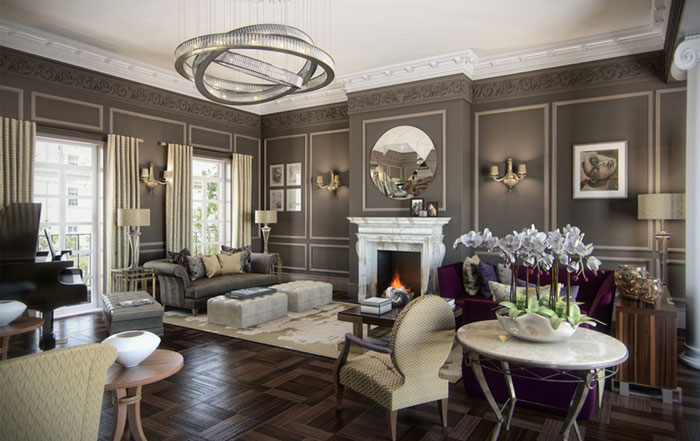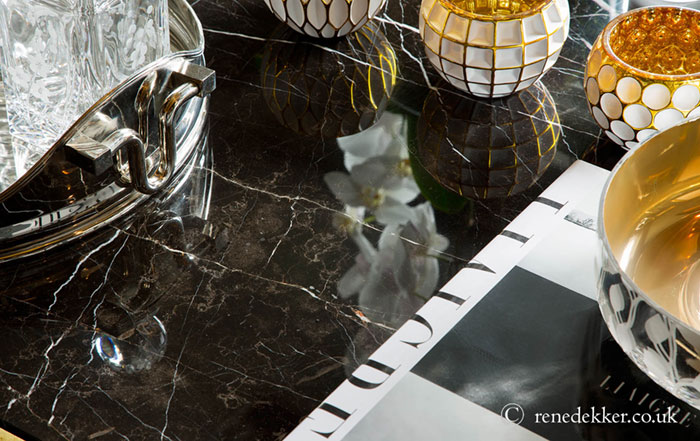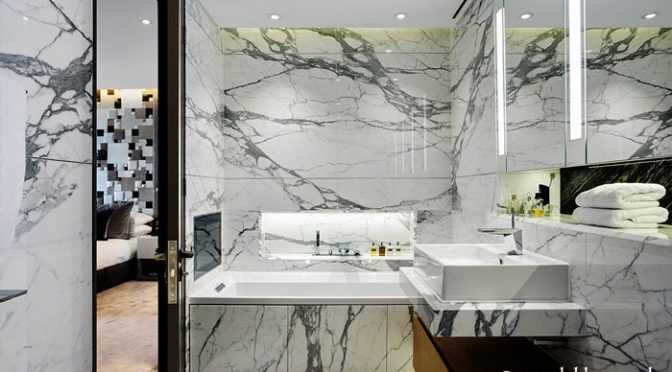Parquet
Parquet is a beautiful, versatile flooring option that exudes sophistication and is a popular choice for high end interior designers. The fashion for this popular type of flooring began in 17th century in France with the classic herringbone or fishbone design. Wooden blocks were cut from a hardwood timber and fitted one by one over the subfloor to create the stunning pattern.
It comes in a range of grains of wood that can be arranged in a wide variety of patterns. This means there's an element of choice when it comes to creating a specific look as its patterns can suit any style and design. In addition, parquet flooring can enhance a space, act as a beautiful background to a scheme, but it also has the potential to be the focal point of any room too.
The other benefits of parquet flooring is that it's a relatively low maintenance option – because of its organic qualities, it's a naturally hygienic, doesn't absorb smells or allergens as, for example, carpet can. It's also durable and hard-wearing, and can last several decades.
If you have a room scheme whose basis is a beautiful parquet floor, combining it with another, equally, stunning natural material will create the perfect backdrop for a classically luxurious look.
Over the last several years, marble has become the latest trend for luxury interior designers such as René Dekker, who creates luxurious and stylish room schemes.

Marble
In geological terms, marble is a metamorphic rock made up of recrystallized carbonate minerals, most commonly calcite or dolomite and is commonly used for sculpture. Out of its scientific context, marble can be elevated to almost celestial heights, particularly when you think of its ever-changing lustre of the Taj Mahal, arguably one of the most stunning creations made by man. Marble has become a cultural symbol of tradition, elegance and refined taste. It has also become a favourite decorative material with top interior designers today.
The classic milky white sheen of Carrara marble has ensured its popularity for many years when it comes to interiors. Recently, however, there's been a trend towards varieties of marble that boast a stronger background colour combined with its characteristic swirls. These unique swirls are a direct result of impurities, such as clay, silt, sand, iron oxides or chert that have developed over decades, embedded within its crystallized components.

Coloured marble is now the stone of choice with high end interior designers — its natural vibrancy, pattern, tone and distinct sheen lends itself to being used internally for columns and walls, particularly for showers and bathrooms, as well as furniture. But it doesn't stop there – the swirls of marble are today also acting as an inspiration for other interiors materials, and even accessories in surprising ways. Its subtly decorative ingredient is now being used in fabrics such as bedding and tableware, and even wallpaper designs.
The darker the hue of the marble, the more depth it gives to a room, making it the perfect partner to the more classic, creamy Carrara. It also provides a wonderful partner when teamed with dark metals, or more textured surfaces such as concrete to create a slightly edgier, more contemporary feel.
Marble is a wonderful material of contrast — it can be subtle or strong; pale or dark; big or discreet; white or colourful. The one thing all the varieties have in common, though, is its classic, timeless quality. So, however it is used — as a backdrop for a glamorous setting or colour scheme, a feature in itself, the natural, classic and elegant components of its colour and pattern will always, literally, shine through.
